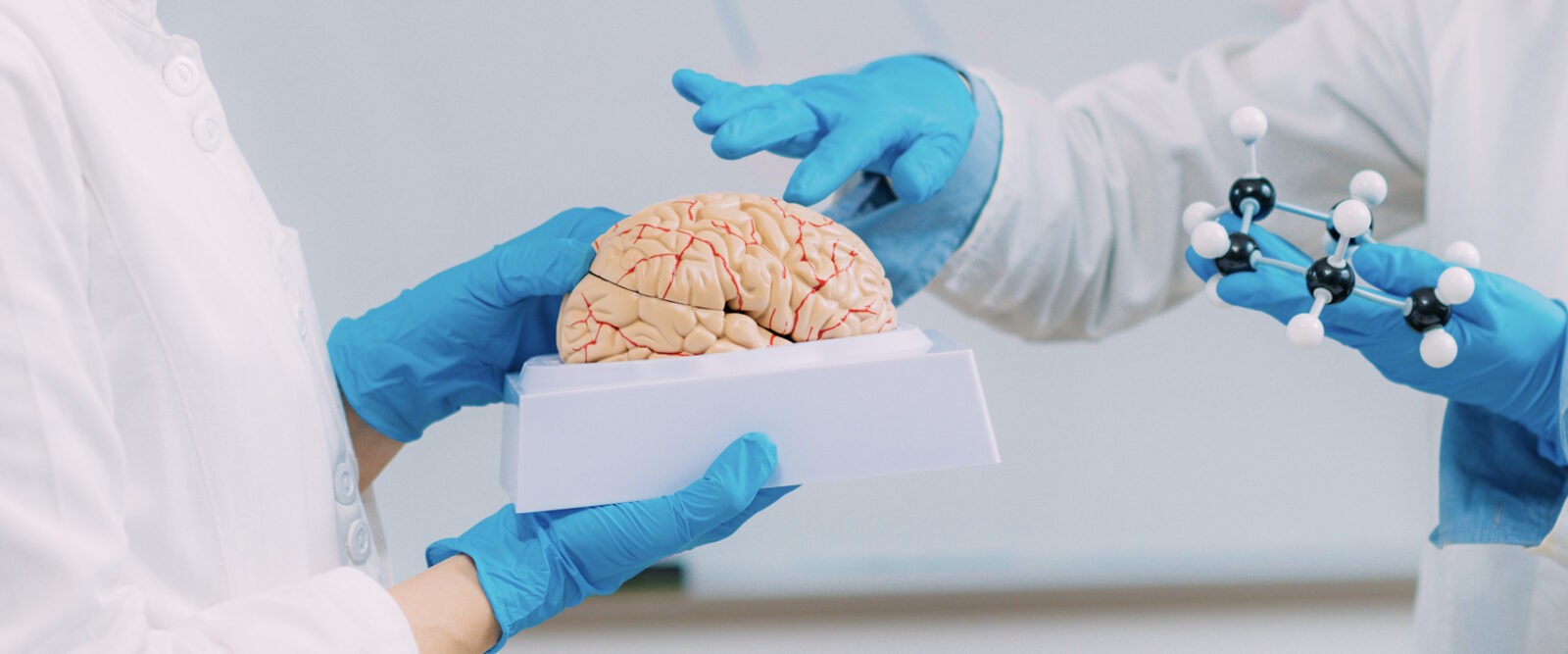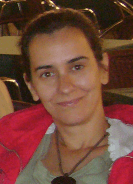LABORATORIOS
Neuro-glial networks laboratory
Neuro-glial networks laboratory
Research
Team
Publications
Contact
Others
Research
Our group is interested in the study of the molecular mechanisms and intercellular processes involved in the communication between neurons and astrocytes, the most abundant glial cell subtype of the Nervous System (NS). The knowledge of the processes that govern this signaling as well as the implications that it may have on different aspects of the physiology and pathology of the nervous system are the basis of our objectives.
Our laboratory focuses on two main general lines of research that aim to clarify the role of astrocytes and neuron-astrocyte signaling in different aspects of the physiopathology of the SN:
1. Neuron-Astrocyte signaling in brain physiology.
We intend to deepen our understanding of the role played by astrocytes in SN physiology as information processors, determining how they can influence neuronal excitability and excitatory and inhibitory synaptic transmission.
2. Neuron-Astrocyte signaling in SN pathologies.
We are interested in understanding the role of astrocytes in SN-related pathologies. Understanding the alterations in astrocytic activity, as well as changes in neuron-astrocyte signaling that concur with the pathology, would contribute to a deeper understanding of the molecular and cellular processes that underlie NS dysfunction.

Most relevant methodology:
The methodology we use in the laboratory to study and analyze neuron-glia signaling includes:
- Electrophysiology techniques that allow the recording of single cell activity or population activity in vitro and in vivo
- Intracellular calcium imaging techniques to monitor the activity of astrocytes and neurons
- Optogenetic techniques (light stimulation)
- Pharmacogenetics (chemical stimulation).
The latter allow the selective activation of cell populations, either astrocytes or neuronal subtypes, in order to elucidate their role in certain brain functions.
Team

Gertrudis Perea Parrilla
Principal Investigator
Publications
Publications
- Mederos S, Hernández-Vivanco A, Ramírez-Franco J, Martín-Fernández M, Navarrete M, Yang A, Boyden ES, Perea G. Melanopsin for precise optogenetic activation of astrocyte-neuron networks. Glia. 2019 Jan 11. doi: 10.1002/glia.23580
- Mederos S, Perea G. Monitoring Interneuron-Astrocyte Signaling and Its Consequences on Synaptic Transmission. Methods Mol Biol. 2019;1938:117-129. doi: 10.1007/978-1-4939-9068-9_9. Book chapter
- Barrio-Alonso E, Hernández-Vivanco A, Walton CC, Perea G, Frade JM. (2018) Cell cycle reentry triggers hyperploidization and synaptic dysfunction followed by delayed cell death in differentiated cortical neurons. Scientific Reports.
- Mederos S, González-Arias C, Perea G.(2018) Astrocyte–Neuron Networks: A Multilane Highway of Signaling for Homeostatic Brain Function. Frontiers in Synaptic Neuroscience.
- Gómez-Gonzalo M, Martin-Fernández M, Martínez-Murillo R, Mederos S, Hernández-Vivanco A, Jamison S, Fernandez AP, Serrano J, Calero P, Futch HS, Corpas R, Sanfeliu C, Perea G*, Araque A*. (2017).Neuron-astrocyte signaling is preserved in the aging brain.Glia. doi: 10.1002/glia.23112.
- Perea G*, Gómez R*, Mederos S, Covelo A, Ballesteros JJ, Schlosser L, Hernández-Vivanco A, Martín-Fernández M, Quintana R, Rayan A, Díez A, Fuenzalida M, Agarwal A, Bergles DE, Bettler B, Manahan-Vaughan D, Martín ED, Kirchhoff F, Araque A. (2016).Activity-dependent switch of GABAergic inhibition into glutamatergic excitation in astrocyte-neuron networks.Elife. pii: e20362. doi: 10.7554/eLife.20362.
- Fernández, A.M., Hernández-Garzón, E., Perez-Domper, P., Perez-Alvarez, A., Mederos, S., Matsui, T., Santi, A., Trueba-Saiz, A., García-Guerra, L., Pose-Utrilla, J., Fielitz, J., Olson, E.N., Fernandez de la Rosa, R., Garcia, L.G., Pozo, M.A., Iglesias, T., Araque, A., Soya, H., Perea, G., Martin, E.D., Torres Aleman, I. (2016).Insulin Regulates Astrocytic Glucose Handling Through Cooperation With Insulin-Like Growth Factor I. Diabetes (http://dx.doi.org/10.2337/db16-0861).
- Cuadrado-Tejedor M, Garcia-Barroso C, Sánchez-Arias JA, Rabal O, Pérez-González M, Mederos S, Ugarte A, Franco R, Segura V, Perea G, Oyarzabal J, Garcia-Osta A. (2016).A First-in-Class Small-Molecule that Acts as a Dual Inhibitor of HDAC and PDE5, and that Rescues Hippocampal Synaptic Impairment in Alzheimer’s Disease Mice.Neuropsychopharmacology. doi: 10.1038/npp.2016.163.
- Martín R, Bajo-Grañeras R, Moratalla R, Perea G, Araque A (2015). Circuit-specific signaling in astrocyte-neuron networks in basal ganglia pathways. Science 349:730-734. doi: 10.1126/science.aaa7945.
- Cuadrado-Tejedor M, Garcia-Barroso C, Sanzhez-Arias J, Mederos S, Rabal O, Ugarte A, Franco R, Pascual-Lucas M, Segura V, Perea G, Oyarzabal J, Garcia-Osta A (2015). Concomitant histone deacetylase and phosphodiesterase 5 inhibition synergistically prevents the disruption in synaptic plasticity and it reverses cognitive impairment in a mouse model of Alzheimer’s disease. Clin Epigenetic. 7:108. doi: 10.1186/s13148-015-0142-9.
- Gómez-Gonzalo M*, Navarrete M*, Perea G*, Covelo A*, Martin M, Luján R, Araque A (2015). Endocannabinoids induce lateral long-term potentiation of transmitter release by stimulation of gliotransmission. Cereb. Cortex 25:3699-3712. doi:10.1093/cercor/bhu231.*Equal contribution.
- Perea G, Yang A, Boyden ES, Sur M (2014). Optogenetic astrocyte activation modulates response selectivity of visual cortex neurons in vivo. Nat. Commun 5:3262. doi: 10.1038/ncomms4262.
- Perea G, Sur M and Araque A (2014). Neuron-Glia Networks: integral gear of brain function. Front. Cell. Neurosci. doi: 10.3389/fncel.2014.00378.
- Chen N, Sugihara H, Sharma J, Perea G, Petravicz J, Le C, Sur M (2012) Nucleus basalis enabled stimulus specific plasticity in the visual cortex is mediated by astrocytes. Proc. Natl. Acad. Sci. USA. 109:E2832-41.
- Navarrete M*, Perea G*, Maglio L, Pastor J, García de Sola R, Araque A (2012). Astrocyte calcium signal and gliotransmission in human brain tissue. Cereb Cortex 10.1093/cercor/bhs122.*Equal contribution.
- Navarrete M*, Perea G*, Fernandez de Sevilla D, Gómez-Gonzalo M, Núñez A, Eduardo Martín ED, Araque A(2012). Astrocytes mediate in vivo cholinergic-induced synaptic plasticity. PLoS Biol. 10(2):e1001259.*Equal contribution.
- Bonansco C, Couve A, Perea G, Ferradas CA, Roncagliolo M, Fuenzalida M (2011). Glutamate released spontaneously from astrocytes sets the threshold for synaptic plasticity. Eur J Neurosci. 33:1483-1492.
Contact
Where to find us
Neuro-glial networks laboratory
Instituto Cajal CSIC. Avda. Doctor Arce, 37. 28002. Madrid
Call us
Phone:
Write us
Email address:

Neuroscience Research Center dependent on the CSIC. Founded in 1920 and initially directed by Santiago Ramón y Cajal. World reference in the study of the brain. Custodian of the Cajal Legacy.
Activities
